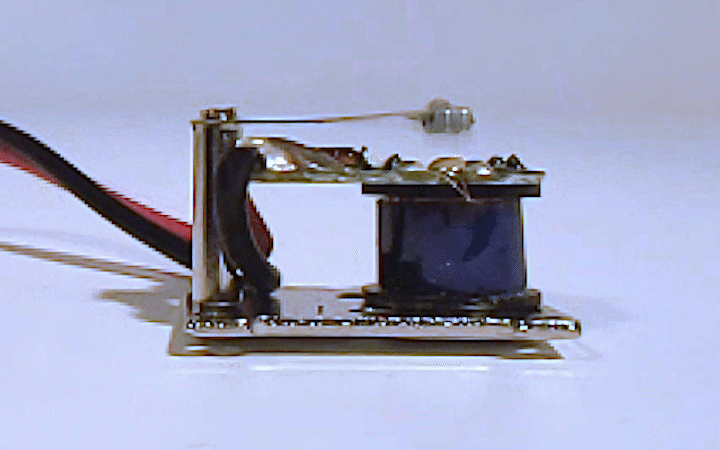Mechanical vs Piezoelectric Buzzers
Buzzers add noise to our Squishy Circuits. But you’ll notice that there are two types – a mechanical buzzer and a piezoelectric buzzer. What’s the difference? Not just the shape of the case! The difference is how the buzzers create noise. If you compare the noises they create side-by-side, the mechanical buzzer creates a low pitch buzz, meanwhile the piezoelectric buzzer creates a high pitch beep.
Mechanical buzzers create their noise by moving a metal tab (or armature) up and down using an electromagnet. When the electromagnet turns on, it attracts the armature pulling it down. When the electromagnet turns off, the armature springs back up. This happens thousands of times a second and creates vibration which in turn creates the ‘buzzing’ noise. You’ll notice if you push the buzzer against a ridged surface, it will be louder because it has a surface to resonate the vibrations.

Piezoelectric buzzers do not have a metal armature, but instead rely on a piezoelectric element. Piezoelectric is derived from the Greek word ‘piezo’ which means pressure or push. As the name implies, a piezoelectric element will create a small amount of electricity when it is pushed or flexed. Conversely, if you apply a voltage across a piezoelectric element, it will slightly flex. Piezoelectric buzzers rely on this process to create vibrations. The buzzer applies a voltage across the piezoelectric element thousands of times per second which flexes the piezoelectric element to create noise.

The pitch generated from a buzzer is called its frequency and is measured in hertz. A frequency of 1 hertz means that there is 1 cycle (vibration) per second. A frequency of 10 hertz means that there are 10 cycles per second. And so on…

We tested 5 of each type of buzzer with a frequency analyzer app and found that:
- The mechanical buzzers have a frequency of approximately 2600 hertz meaning that the metal armature is moving up and down 2600 times per second. Since the mechanical buzzers rely on the metal armature, there is more variability in their individual frequencies.
- The piezoelectric buzzers have a frequency of approximately 3800 Hertz meaning that the piezoelectric element is flexing 3800 times per second. It is flexing such a little distance that you cannot see it, but you can lightly feel it!

